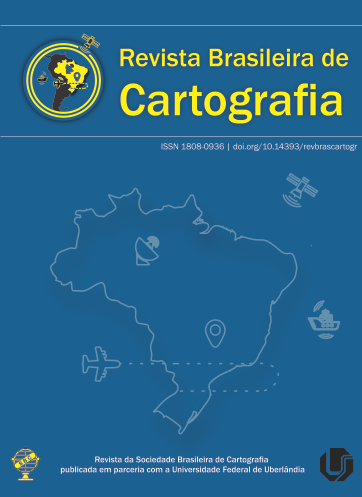Análise Espacial Aplicada ao Estabelecimento de Novos Varejos Alimentícios na Cidade de Maringá/PR: Estudo de Caso de Geomarketing
Conteúdo do artigo principal
Resumo
A crescente competitividade de mercado e a popularização dos Sistemas de Informação Geográfica têm levado a uma necessidade de integração de dados e metodologias para geração de análises espaciais robustas. Este trabalho objetiva apresentar um estudo de caso que busca mapear regiões potenciais para a instalação de varejos alimentícios no município de Maringá-PR. A partir de um conjunto de dados viários, locacionais e sociodemográficos gratuitos, foi gerado um mapa síntese através do método AHP em ambiente SIG, subsidiado por métodos de interpolação como krigagem ordinária e regressão polinomial. Em comparação com estudos de caráter qualitativo, o resultado da aplicação desta metodologia permitiu uma integração objetiva de diversas variáveis em um mapa síntese. O potencial de instalação de varejos alimentícios se concentrou no centro da cidade, outras duas manchas com alto potencial de instalação foram identificadas, uma no setor leste da cidade e a outra à noroeste. Ressalta-se que o mapeamento de síntese apresenta a variação espacial do potencial para instalação de novos varejos alimentícios, sem a especificação de qual tipo.
Downloads
Detalhes do artigo
Seção
Autores que publicam nesta revista concordam com os seguintes termos:
- Autores mantém os direitos autorais e concedem à revista o direito de primeira publicação, com o trabalho simultaneamente licenciado sob a Licença Creative Commons Atribuição que permite o compartilhamento do trabalho com reconhecimento da autoria e publicação inicial nesta revista.
- Autores têm autorização para assumir contratos adicionais separadamente, para distribuição não-exclusiva da versão do trabalho publicada nesta revista (ex.: publicar em repositório institucional ou como capítulo de livro), com reconhecimento de autoria e publicação inicial nesta revista.
- Autores têm permissão e são estimulados a publicar e distribuir seu trabalho online (ex.: em repositórios institucionais ou na sua página pessoal) a qualquer ponto antes ou durante o processo editorial, já que isso pode gerar alterações produtivas, bem como aumentar o impacto e a citação do trabalho publicado (veja "O Efeito do Acesso Aberto").





